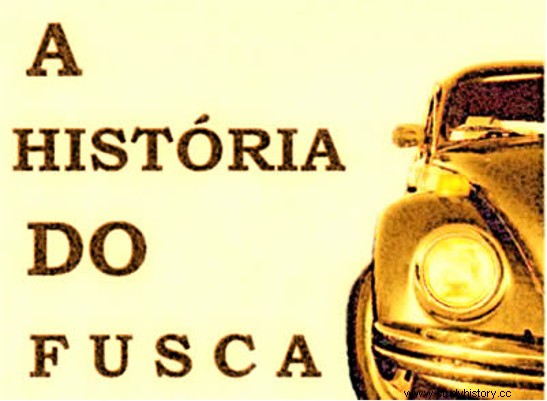
By Rainer Sousa
Escarabajo, Huevito, Maggiolino, Bug, Coccinelle and Beetle are just some of the synonyms used to name the Beetle, one of the most popular cars in all of history. Those most sympathetic to modernity think that this automobile has a nostalgic flavor and that it does not even come close to the powerful machines produced today. On the other hand, a great legion of aficionados insists on conserving and keeping alive the memory of this automobile myth.
Despite its good name, the Beetle's history is linked to a context far removed from the glamor and friendliness of this small car. Around 1932, the German Ferdinand Porsche began to sketch the designs of a new car that would be called “Volkswagen”, which in German means “the people's car”. While the first versions were being tested, the German government took an interest in the project and made an investment of 200,000 marks for the manufacture of three prototypes.
With an amazing air-cooled engine, the Beetle got off the ground more than a year late, with the name Volksauto-series VW-3 and tested for an extensive 50 thousand kilometers . In 1938, due to the good performance of the vehicle, several actions were taken so that its series production could begin. Shortly after, this important step in the life of the Beetle ended up being interrupted by the outbreak of the Second World War.
Starting in 1939, using the same platform as the Beetle, the Germans created the Kübelwagen jeep, the Schwimmvagen amphibious and the Kommandeurwagen, which would be used on the battlefields of the time. In 1944, at the end of the war, the factory located in Fallersleben was completely destroyed by the bombings launched by the Allied forces. Without any prestige in the market, the manufacture ended up being timidly resumed by the English major Ivan Hirst. Soon after, the government recovered the project, leaving it under the tutelage of Heinrich Nordhoff.
At that time, Nordhoff took several steps to make the Beetle reach the levels of vehicles produced on a large scale. In the post-World War II period, the vehicle surpassed 25,000 copies and launched its first convertible version. The Dutch soon realized the idea and entered the vehicle's history as its first importer. In the 1950s, the Americans tried to popularize the model throughout the Americas.
On March 23, 1953, the first Volkswagen branch was installed in Brazil with the mission of popularizing the Beetle in our lands. In the following decades, this legendary car experienced the oscillations that put it between stardom and decline. It became the subject of a Walt Disney film, was threatened by competition from more daring models and was produced again at the request of a President of the Republic. In 2003, a farewell party marked the manufacture of its last copy.
